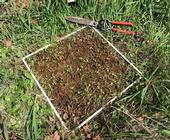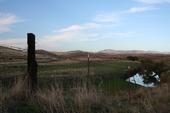- Author: Jeannette E. Warnert

When California was part of the Wild West, it took a certain amount of guesswork to move cattle from their home range to summer pastures while making sure sufficient forage was left behind to hold the cattle over till fall rainfall spurred new growth.
“Ranchers eyeballed it,” said Theresa Becchetti, UC Cooperative Extension livestock and natural resources advisor. “In time, second-, third-, and fourth-generation ranchers got pretty good at deciding, but UC Cooperative Extension introduced a more scientific approach.”
In the spring of 1936, the USDA Forest Services began measuring ungrazed forage at the San Joaquin Experimental Range in Madera County....
- Author: Jeannette E. Warnert

The health benefits of grass-fed beef are well documented. Meat from cattle that live out their lives grazing on rangeland before being processed has more beta-carotene, vitamin E and omega-3 fatty acids than the meat from animals finished at feed lots.
The health benefits – and for some consumers, the idea that cattle raised on the range have longer, happier lives than conventional beef cattle – increases the value of the product. Grass-fed beef generally sells for 60 percent more per pound than standard beef. These potential premium prices get cattle ranchers' interest, and therefore captured the attention of UC...



